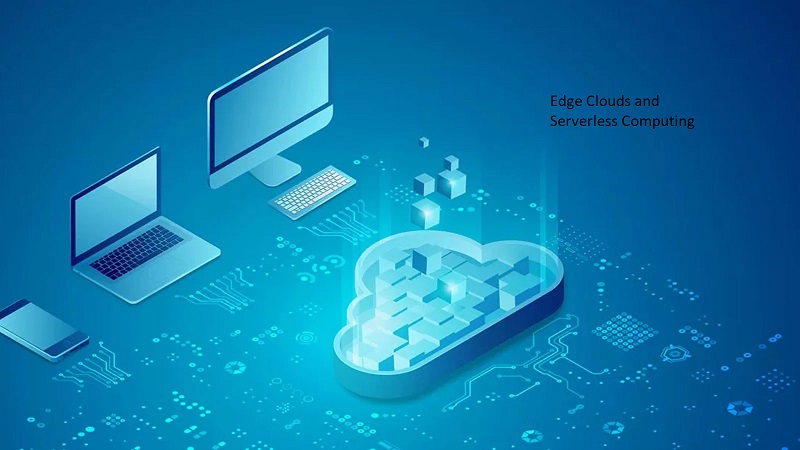
Demystifying Edge Clouds
Let’s kick off the blog post by defining edge clouds. Imagine a distributed network of mini-data centers strategically positioned closer to the devices generating data, instead of relying on centralized cloud servers. This is the essence of edge clouds. A recent Gartner report predicts that “by 2 2025, 50% of enterprise-generated data will be created and processed at the edge.” This shift signifies the growing importance of edge computing for real-time processing, reduced latency, and improved bandwidth efficiency.
Here’s a breakdown of the key benefits of edge clouds:
- Reduced Latency: By processing data locally, edge clouds eliminate the need for long-distance travel, significantly reducing latency. This is crucial for applications requiring real-time responses, such as autonomous vehicles, augmented reality, and industrial control systems.
- Improved Bandwidth Efficiency: Edge clouds alleviate the burden on core networks by processing data locally. This is particularly beneficial for bandwidth-intensive applications like video streaming and IoT deployments with numerous sensors.
- Enhanced Security and Privacy: Sensitive data can be processed and stored at the edge, minimizing its exposure to the public internet and potential security breaches. This is especially valuable for industries with strict data privacy regulations.
Serverless Computing – Unleashing Agility in the Age of Edge
- What is Serverless Computing?
- Briefly define serverless computing and its core concept of removing server management from developers.
- Highlight the pay-per-use model and its cost benefits.
- Why Serverless and Edge are a Perfect Match?
- Explain how serverless functions can be deployed on edge clouds, enabling developers to focus on application logic without worrying about infrastructure.
- Mention the benefits of this synergy: faster development cycles, improved scalability, and cost optimization.
- Real-world Applications of Serverless at the Edge
- Provide a few concrete examples of how this combined approach is being used in different industries (e.g., real-time fraud detection in e-commerce, image recognition in smart cities, data filtering for industrial IoT).
Serverless Computing – Unleashing Agility in the Age of Edge
Building upon the concept of serverless computing, this section will explore its synergy with edge clouds.
- What is Serverless Computing? ( Briefly touch upon the key points)
In a nutshell, serverless computing offers a pay-per-use model where developers write code (functions) that execute in response to events without managing servers. This frees them to focus on application logic and innovation.
- Why Serverless and Edge are a Perfect Match?
The marriage of serverless computing and edge clouds creates a powerful duo for modern application development:
- Focus on Code, Not Servers: Serverless functions can be seamlessly deployed on edge clouds, allowing developers to write code without worrying about infrastructure provisioning or management at the edge. This streamlines development and reduces time-to-market.
- Faster Development Cycles: The combined approach eliminates server setup and maintenance tasks, enabling developers to iterate and deploy code rapidly. This fosters agility and quicker innovation.
- Improved Scalability: Serverless functions scale automatically based on demand at the edge, ensuring optimal resource utilization and cost efficiency.
- Cost Optimization: The pay-per-use model of serverless aligns perfectly with the dynamic nature of edge workloads. Developers only pay for the resources their functions consume, leading to cost savings.
- Real-world Applications of Serverless at the Edge
Here are some compelling examples showcasing the power of this combined approach across industries:
- Real-time Fraud Detection in E-commerce: Serverless functions deployed at the edge can analyze customer transactions in real-time, enabling immediate detection and prevention of fraudulent activities.
- Image Recognition in Smart Cities: Serverless functions running on edge devices can process video streams from traffic cameras for real-time object recognition, facilitating intelligent traffic management and public safety applications.
- Data Filtering for Industrial IoT: Edge-based serverless functions can filter and pre-process sensor data from industrial equipment before sending it to the cloud for further analysis. This reduces network bandwidth usage and optimizes cloud resource utilization.
The Future Landscape – A Glimpse Ahead
This section can explore future trends and potential challenges associated with edge and serverless computing.
- Emerging Technologies: Briefly discuss how advancements in areas like artificial intelligence (AI) and machine learning (ML) can further enhance the capabilities of edge-serverless applications. For instance, AI-powered serverless functions at the edge can enable real-time anomaly detection or even intelligent decision-making on devices.
- Security Considerations: While edge computing offers security benefits by processing data locally, it also introduces a wider attack surface. Mention the importance of robust security measures for edge devices and serverless functions to mitigate potential security risks.
- Standardization and Interoperability: The evolving landscape of edge and serverless computing necessitates ongoing efforts towards standardization and interoperability. This will allow developers to seamlessly deploy and manage serverless functions across different edge cloud platforms.
Conclusion – Ushering in a New Era of Computing
The convergence of edge clouds and serverless computing represents a significant leap forward in application development. By bringing processing power closer to the data source and offering a serverless execution model, this duet unlocks a new era of:
- Real-time Applications: Ultra-low latency processing at the edge facilitates real-time applications in areas like AR/VR, autonomous vehicles, and industrial automation.
- Scalability and Efficiency: The combined approach enables elastic scaling and optimized resource utilization, ensuring applications can handle dynamic workloads efficiently.
- Cost-effectiveness: Serverless’ pay-per-use model and reduced data transfer to the cloud contribute to significant cost savings, particularly for data-intensive applications.
- Innovation and Agility: The simplified development model of serverless frees developers to focus on innovation, accelerating development cycles and time-to-market.
While challenges like resource constraints, security considerations, and evolving standards need to be addressed, the potential benefits of edge-serverless computing are undeniable. As these technologies mature and become more standardized, we can expect to see even more groundbreaking applications emerge across various industries.
Ethical Considerations: As edge computing becomes more widespread, it’s important to address ethical considerations surrounding data privacy, security, and potential bias in AI-powered edge functions.
Sustainability: Energy efficiency of edge devices and serverless execution models will be crucial factors as the technology landscape evolves. Emphasize the need for sustainable practices in edge deployments.
